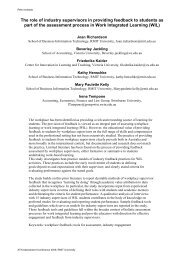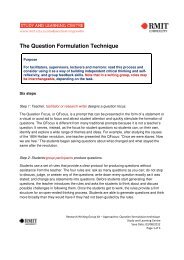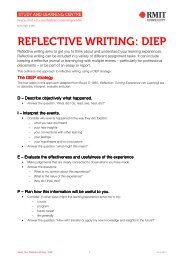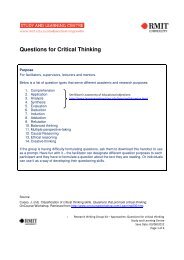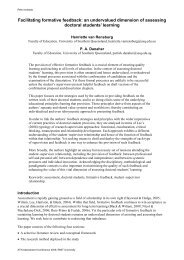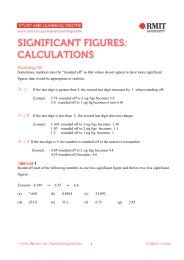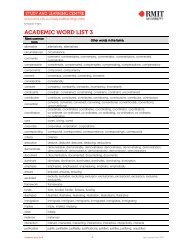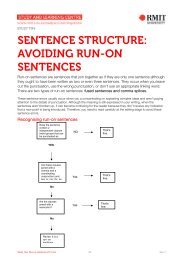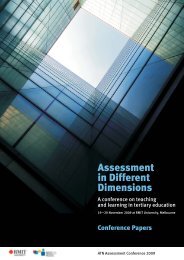student feedback and leadership - Office for Learning and Teaching
student feedback and leadership - Office for Learning and Teaching
student feedback and leadership - Office for Learning and Teaching
Create successful ePaper yourself
Turn your PDF publications into a flip-book with our unique Google optimized e-Paper software.
Part A: Developing a Distributed Leadership Model - Secton 3: Building Leadership Capacity<br />
The importance of the Plenary sessions as a <strong>for</strong>um <strong>for</strong> ARTs to share their<br />
progress, engage in discussion <strong>and</strong> obtain the support of senior leaders was<br />
identified as an important advance. The major outcome from the second plenary<br />
was discussion of the need to develop increased opportunities to disseminate<br />
knowledge about changes being made <strong>and</strong> positive outcomes that were resulting<br />
across the university. The comment was made that the project was providing the<br />
link to develop change processes that can be shared with other schools to lead<br />
towards a cultural change across RMIT.<br />
3.2.5 Reflect<br />
Reflection on the Leadership issues that emerged in this cycle suggest a second<br />
element in a <strong>leadership</strong> model <strong>for</strong> enhancing <strong>student</strong> learning <strong>and</strong> teaching<br />
practice through responding to <strong>student</strong> <strong>feedback</strong>. This COLLABORATIVE<br />
LEADERSHIP element is illustrated in Figure 10.<br />
Figure 10 Distributed Leadership Model Element Two: Collaborative Leadership<br />
A collaborative approach includes all relevant services across the university<br />
in <strong>leadership</strong> designed to develop joint problem-solving. The importance of<br />
joint collaboration was also demonstrated in the ARTs experience of developing<br />
meaning by sharing individual experiences. This led to the identification of small<br />
changes to teaching practice that had significant effects <strong>for</strong> the <strong>student</strong>s.<br />
It was recognised that while collaboration requires time <strong>for</strong> trust to be developed<br />
<strong>and</strong> blame removed, once the move to a more collaborative teamwork approach<br />
occurs it is easier to attach meaning to <strong>student</strong> <strong>feedback</strong> <strong>and</strong> develop strategies<br />
to improve the <strong>student</strong> experience. This involves a more shared systems<br />
approach that links various <strong>student</strong> service providers <strong>and</strong> academics, an issue<br />
that emerged as a central factor in improving <strong>student</strong> <strong>feedback</strong>.<br />
Page 47



